Review for Code Geass: Lelouch of the Rebellion - Complete Season 1
Introduction
Code Geass: Lelouch of the Rebellion has been license rescued by Kazé Entertainment, and given its ever so brief release from Beez, that means a lot of anime fans now get a second chance to partake of its brilliance, as it’s very likely they missed out the first time. Code Geass was at the time of its initial Japanese broadcast, one of those ‘next big things’ that all anime fans eagerly await. It was the Madoka Magica of that year, and everyone was talking about it. I missed out the first time round down to my instinctive dislike of giant robots, a dislike I’ve often had to subsequently overcome when persuading myself to try a show based on positive reviews and hype.
When the Blu-ray check discs for Code Geass: Lelouch of the Rebellion Season 1 showed up, so did the DVD check discs, and there’s enough of a difference between the two releases for it to warrant a compare and contrast review. For one thing, just like the original release from Beez, the Kazé DVD release of the first season spans 6 discs. Another thing is that the DVD actually has more in the way of extras than the Blu-ray, although that may not be sufficient motivation to choose the lesser format. Of course while it seems that Code Geass may just be the show that every self-respecting anime fan ought to have, not every self respecting anime fan will have yet made the jump to HD. So here’s the review for the DVD version of the show. Note that while I’m watching all of the series on Blu-ray, I’ll be restricting myself to one episode per disc of the DVD release, the English dub just to change things up, and to enumerate the extra features.
In an alternate world, 10th August 2010 saw the invasion of Japan by the Holy Empire of Britannia. The giant walking powered suits known as Knightmare Frames quickly overwhelmed Japan’s conventional defences, and the nation fell in the space of a month. Re-designated as Area 11 of the Empire, its very identity erased, the Elevens became second class citizens in their own home, ruled over by the aristocratic Britannians. But as with every ruthless overseer, resistance soon developed. Lelouch Lamperouge is an exiled Britannian prince with his own grudge against the Empire, as well as a desire to fulfil his promise to his crippled sister Nunnally, to create a peaceful world for her when she regains her sight.
It’s a terrorist attack that gives Lelouch the weapon with which to advance his timetable. Terrorists steal and make off with a container of poison gas, and the Britannians mobilise a force to hunt them down. Lelouch, playing hooky from his prestigious school gets caught up in the mayhem. It isn’t gas that has been stolen though; it’s a secret for which the Britannians would indiscriminately kill to protect. It’s a green-haired girl named CC. CC senses that Lelouch is the one that she has been waiting for, and bestows a gift upon him, the ability to force anyone to obey his will, a geass. With his keen strategic mind, and his vendetta against the Empire, Lelouch now has the tools to take the fight to the invaders. All he needs now is to find the resistance.
Kazé Entertainment release the 25-episode Code Geass: Lelouch of the Rebellion Season 1 across 6 dual layer DVD discs.
Disc 1
1. The Day a New Demon Was Born
2. The White Knight Awakens
3. The False Classmate
4. His Name is Zero
5. The Princess and the Witch
Disc 2
6. The Stolen Mask
7. Attack Cornelia
8. The Black Knights
9. Refrain
Disc 3
10. Guren Dances
11. Battle for Narita
12. The Messenger From Kyoto
13. Shirley at Gunpoint
Disc 4
14. Geass vs. Geass
15. Cheering Mao
16. Nunnally Held Hostage
17. Knight
Disc 5
18. I Order You, Suzaku Kururugi
19. Island of the Gods
20. The Battle for Kyushu
21. The School Festival Declaration
Disc 6
22. Bloodstained Euphy
23. At Least With Sorrow
24. The Collapsing Stage
25. Zero
Picture
Code Geass gets a 1.78:1 anamorphic transfer on these dual layer DVDs from Kazé. The image is clear and sharp throughout, and presented in native PAL with the requisite 4% speedup. There is the odd moment of jerkiness in the pans, and fine edges and lines are prone to a bit of shimmer and aliasing, but overall this a quality presentation of an anime show. I watched some episodes on a CRT widescreen set and was more than happy with the presentation. When up-scaled to an HD panel it looks as good as any such anime DVD can be expected to look. It’s only in direct comparison to the Blu-ray that the more limited colour palette, the interlacing and the compression make it pale. But if all you have is a DVD player, and no immediate plans to upgrade, then this DVD collection will suffice.
It transpires that the character designs for Code Geass come from none other than CLAMP, the collective behind shows and manga such as Tsubasa, xxxHolic, Tokyo Babylon and X, but the angular chins and the large eyes are notably diminished in Code Geass, with just a hint of their trademark style getting through. It’s an impressive animation, full of detail and energetically animated. This isn’t one of those shows that resorts to still frames when the budget tightens, and the overall quality of the show is always high. The world design too is of equivalent quality, and the giant robots and fantastic technology integrate well into this alternate vision of the near future. If you’re wondering at the white pizza boxes and blank advertising hoardings, this show was sponsored in Japan by Pizza Hut, but that sponsorship doesn’t extend outside the territory, and was removed.
Sound
The audio comes in DD 2.0 Surround English and Japanese, with player forced subtitles for the Japanese tracks, and player forced signs for the English track. As always with a Kazé disc, if you are hard of hearing and prefer the English dub, you’re screwed, and their DVDs make it practically impossible to change tracks on the fly without losing your place in the episode. For the DVD episodes I watched, I went with the English audio, and found it to be a pretty solid anime dub, working well for the drama and the action, but faltering a little when it came to the comedy. The stereo works well enough to convey the action, and the show’s music drives the story along, enhancing the emotional content without overwhelming it. The show also gets a set of very catchy theme songs. The audio seems pitch-corrected for the PAL speed-up.
While I could accept that licensor requirements might force a Blu-ray’s audio and subtitles to be locked, I can’t believe that the same restrictions apply to DVDs, and that Kazé keep doing it with their discs is pure insanity. Also, they can show captions, and they can show dialogue, but they can’t show the both simultaneously. It’s lucky then that Code Geass is a show with very little in the way of on-screen Japanese text to translate. If you bought the original Beez discs for Code Geass, count yourself lucky.
Extras
All discs kick off with skippable trailers for Bleach the Movie 4: Hellverse and the first Berserk movie, and all present their content with animated menus. Also being Kazé DVDs, they are even more locked than their Blu-ray counterparts. No way of figuring out the runtime of the episodes without a stopwatch, and no easy way to change subtitles and audio from within an episode. In a very nice touch, the DVD discs shade from white to black across all six discs, reflecting the darkening nature of the story.
Disc 1
You’ll find the first textless opening and textless closing here. They’re presented in NTSC-PAL to preserve the original run time and song tempos, while they also have player-locked karaoke subtitles (rendering them not exactly textless).
The first three audio commentaries are on this disc.
The episode 1 audio commentary gathers voice actors Jun Fukuyama (Lelouch), Yukana (CC), director Goro Taniguchi, and screenwriter Ichiro Okouchi to chat about the show. It’s early days as yet, and they steer clear ofr spoilers. It’s a light chat that focuses more on auditioning and recording dialogue, with some mention of how Code Geass differs from your usual anime in the way that it pushes certain boundaries.
Episode 4 sees Jun Fukuyama (Lelouch), this time joining actors Ami Koshimizu (Kallen), and Ken Narita (Jeremiah Gottwald) along with Sunrise producer Kawaguchi, for another light-hearted chat about the show and the characters. Be warned that this time spoilers are present, although more in the way of teasers than actual spoilers.
Episode 5’s audio commentary sees Jun Fukuyama, Yukana, Goro Taniguchi and Ichiro Okouchi return for a light hearted chat. This time it’s a more scene specific audio commentary, and once again there are a few teasers for what lies ahead.
Disc 2
Here you will find the second version of the first textless opening, also with player forced karaoke subtitles.
You’ll also find the first three Picture Dramas here. These are set at various points in the series, and comprise the voice actors performing short sketches against still images. These vary from comic sketches to character backgrounds and episode prequels, and are well worth watching. In total, across the discs the Picture Dramas total 36 minutes, and are presented in English and Japanese.
Episode 8 sees Jun Fukuyama, producer Kawaguchi returning, this time with Mitsuaki Madono (Kaname Ohgi), and Kazunari Tanaka (Tamaki) to get into a scene specific free-for-all.
Disc 3
You’ll find three more Picture Dramas here.
Jun Fukuyama and Yukina this time join Character Animation Director Yuriko Chiba, Knightmare Designer and Mecha Animation Director Eiji Nakada, and Associate Director Kazuya Murata for the commentary on episode 11. Following a giggly start, this develops into a series of interviews about the various technical roles that the staff take on.
Disc 4
Here you’ll find another textless opening and a textless closing (with forced subtitles).
The commentary on episode 14 sees Jun Fukuyama and Goro Taniguchi with Animation Director Seiichi Nakatani and voice of Shirley Fenette, Fumiko Orikasa. This is another nice scene specific commentary, but they do stray a little further afield, with some interesting input from the actors with regards to how they developed their characters.
Disc 5
You’ll find the second opening, version 2, presented in its karaoke form here.
Episode 19’s commentary sees the return of Jun Fukuyama and Ami Koshimizu, this time with Takahiro Sakurai (Suzaku), as well as Assistant Series Planner Hiroyuki Yoshino, and Character Designer and occasional Chief Animator Takahiro Kimura, as they appreciate a fan service laden episode. Of interest is a little sidebar on how while animation may inform a character, sometimes voice actor performance can influence animation.
Episode 21 sees Bandai Entertainment’s Yukawa join Jun Fukuyama, Takahiro Sakurai and Yukana. This is probably the most frivolous of all the commentaries, with little of import discussed, and plenty of gossip flying. Stay tuned for pizza logistics.
Disc 6
You get the third textless opening, and the second version of the second textless closing.
The final commentary is on episode 25 and sees Jun Fukuyama, Takahiro Sakurai, Yukana, and Ami Koshimizu get together one final time to take a look back over the series and see how their characters have progressed.
The final 3 Picture Dramas are here.
Conclusion
In one word, epic!
Code Geass is one of the best action drama anime that I have seen in a long time. I was glued to the screen for all 25 episodes, and even took in a few again to sample the English dub straight after, and it was still just as engrossing. I really would love to talk about this series, but this is one show that simply mustn’t be spoiled. It’s a grand, operatic, theatrical storyline, with larger than life characters, and grand themes of power and revenge, with lashings of juicy melodrama. If you could meld a sci-fi action drama with one of those eighties soap operas, throw in a bit of comedy, and whopping great giant robots on roller-blades, you’d get something like Code Geass. It’s a story that thrives on revelation and plot twist, and the juicy stuff is not the sort of thing that you reveal in a review. Let me put it this way. Watching this show, you’ll turn into a character from Friends, because I can guarantee that at least once in each episode you will shout at the screen, “Oh my God! You did not just do that!” The writers will inflict the worst kind of reversals on the characters, will take the show in unexpectedly dark directions, and convert any semblance of hope and joy to tragedy and despair, and make it all look natural, as if it was ever fated to be.
When the highlight of the first episode is an indiscriminate massacre, you should get the darkness of the show. But this also contrasts with the lightness of the show, with the protagonist attending an elite high school where the usual comic hi-jinks are liable to ensue, at least at first. It’s fast paced, action packed, with romance, drama, comedy, a rich and convoluted narrative, and did I mention that it’s epic? It all comes down to the most engaging, well-written, manipulative Machiavellian anti-hero to be seen in anime since Death Note’s Light Yagami. Lelouch Lamperouge is the main character in this show, and it’s his combined lust for vengeance and wish to create a better world that drives the story, and he’s got the messianic deranged laughter down pat.
At least in comparison to Light Yagami, Lelouch has a tangible reason beyond simple ennui to explain his superiority complex. For one thing he is a Britannian prince, and as a result of that status his mother was assassinated, his sister Nunnally blinded and crippled, and the siblings exiled to Japan. In exile he might have had a chance to build a life for himself, and indeed he had made a friend in Suzaku Kururugi, the son of the Japanese Prime Minister, but then lusting after a precious resource buried in Mount Fuji, Britannia invaded and absorbed Japan into its holdings, renaming it Area 11 and turning the inhabitants into second class citizens.
It’s understandable then that Lelouch has a grudge against Britannia, and his family in particular. When we meet him, he’s attending a prestigious school incognito, and expressing his resentment against the invaders by playing members of the nobility at chess and beating the pants off them. It’s when he encounters a mysterious green-haired girl named CC and she gives him the power of the geass that his path to vengeance is opened up. It’s also here where we see just how the Britannian overlords truly see the Elevens that they belittle, denigrate and discriminate against. A resistance group has stolen what they think is a weapon of mass destruction from the Britannians, although it’s something a lot more dangerous. The Britannians want it back, and when the danger arises that it will fall into the wrong hands, they are happy enough to slaughter a whole district of Elevens just to prohibit that eventuality. Lelouch is caught up in this, the wrong place at the wrong time, and it turns out that his Britannian heritage isn’t enough to protect him from the violence. The first time he uses the geass, it’s in an act of violence himself, and the pattern is set for his vengeance.
It is a double edged sword though, as the geass, the power to demand instant obedience from whoever he chooses, only works once per person, and he has to choose his words carefully, lest the results aren’t what he requires. As the series progresses and his powers develop, it also turns out that the geass isn’t wholly under the control of the user, especially when he meets Mao, another user of the geass that is looking to reclaim CC as his partner, and who can’t turn his powers off.
He has the power to command obedience, and the strategic and tactical skills to stand up to the Britannians, but Lelouch needs some way to express these abilities, and it’s fortuitous that he encounters the resistance movement early on, and is able to gain their trust by helping them out of a perilous situation. Of course a Britannian face leading the resistance wouldn’t inspire trust, so the character of Zero is born, a masked figure to lead the resistance on its mission to reclaim Japan. For Lelouch, it’s just a means to an end, and despite some initial failures, he’s careful to disguise that from his followers.
It isn’t long before he becomes a thorn in the side of the Britannians, and they send more and more firepower against him. He also winds up facing his half-siblings, the other Britannian princes and princesses, which given his search for his mother’s assassins is just what he wants. The answers aren’t easily forthcoming though, and not all of his siblings are typical of Britannian policy. Clovis is a man more interested in art and the finer things than enacting his father’s policies, and as a result comes across as unfeeling and uninvolved. Schneizel’s reputation is harsh, but in reality the man is more reasoned and thoughtful, and it’s really only Cornelia who fits the stereotype of brutal and lethal warrior, although she too has a soft side. But her younger sister Euphemia grew up with Lelouch and Nunnally, and she’s a lot more gentle and likeable a character.
Early on Lelouch also encounters his best friend after a period of several years. The irony is that while Lelouch craves the downfall of Britannia, and the freedom of the Japanese nation, Suzaku has instead become a Britannian soldier, and thinks that the best way to change Britannian policy is from the inside, using peaceful means. He catches the eye early on of A.S.E.E.C, an experimental unit that is developing the next generation of Knightmares, the giant robots in the show, and he’s given a job as test pilot. It isn’t long before he sees action against Zero and his band of rebels. The irony is that he also transfers to Ashford Academy, so by day he and Lelouch are best friends, and in combat, the Lancelot that he pilots is the sworn enemy of Zero. Also going to Ashford Academy is a somewhat sickly girl named Kallen Stadtfeld, who also happens to be a Knightmare pilot in Zero’s Black Knights group, and while Lelouch soon learns her identity, she has no idea that Lelouch and Zero are one and the same.
This is just the set up for the show, and I could go on for hours more. There are plenty of other characters to write about, who all play their part in enriching the story. There are the other students in the school, the various characters within the Britannian hierarchy, the members of the Black Knights group, the other Japanese resistance groups, and all these characters have stories that develop through the series, many of them wear more than one face, and hide secrets and mysteries. It’s a rich, beautifully developed alternate world that is utterly compelling and engrossing.
It’s a brilliantly written story, grand, epic, and operatic that makes sure that each episode delivers answers, but leaves questions hanging, throws in plot twists so intense that your stomach will lurch at the breathtaking effrontery of it all. And the series ends on an almighty cliff-hanger that leaves you gasping with incredulity. Surely there is no way that they can resolve this. I think that Code Geass: Lelouch of the Rebellion is as close as anime has got to Babylon 5, one of my favourite sci-fi series. It has the same scope in its story, the same wit and intelligence, the same blending of comedy and drama, and the same ability to turn joy to tragedy at the drop of a hat, all backed by a sheer brazenness in the way that it develops its story and characters. At the point that the show leaves us, the second series can’t come soon enough. Thankfully we only have to wait until March.
Kazé’s DVDs are as user-friendly as ever, i.e. not friendly at all, but the quality of the image on these discs is as good as you can probably get on DVD. If you have a DVD player, a relatively small widescreen TV, and no intention of upgrading, then these discs will do fine. If on the other hand you have the Beez release, there’s no point in double dipping, as there is nothing new here. But really, this title is worth getting a Blu-ray player for, especially as it’s so cheap. Besides, do you want compressed DVDs, with PAL speed-up, when you can have it on Blu-ray, in HD, with better colour-rendition, and at the intended 24 fps?
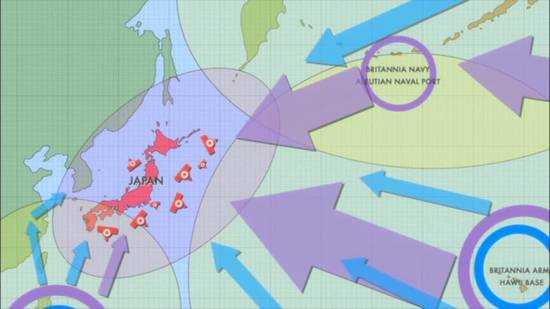
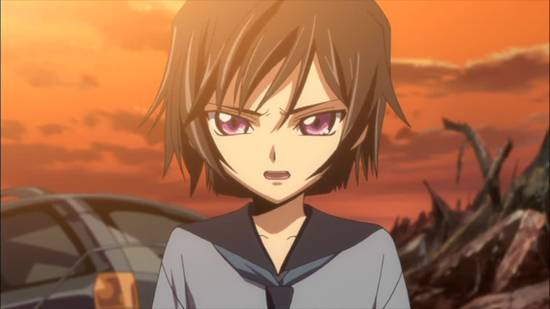
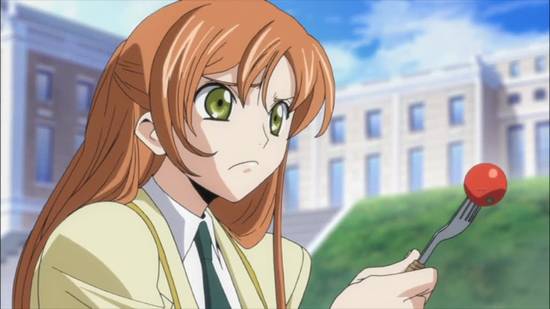
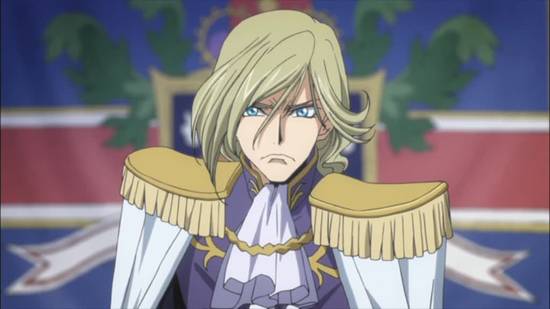

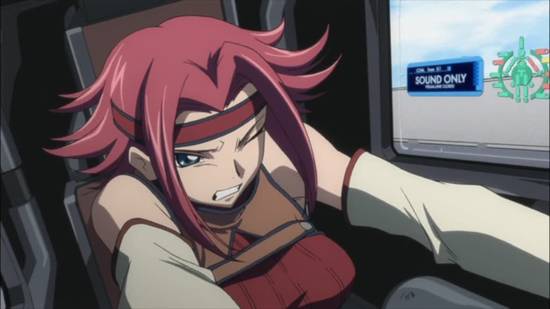
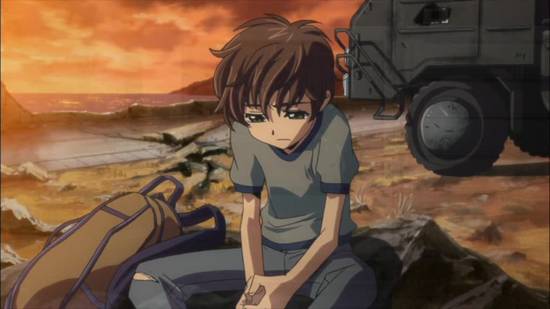
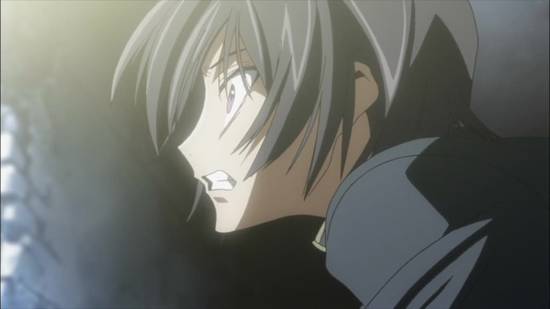
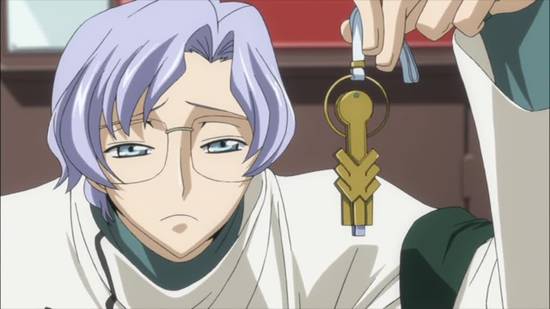

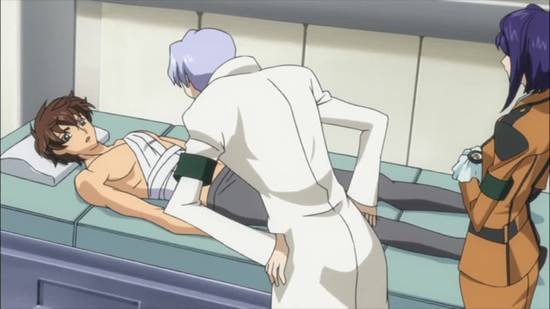
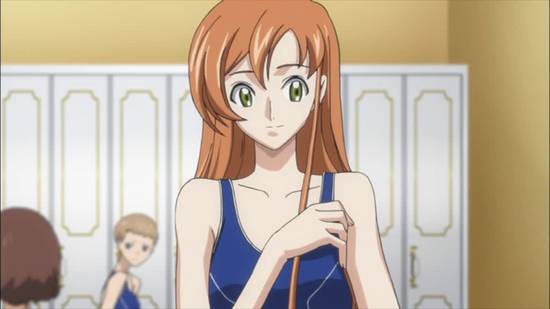
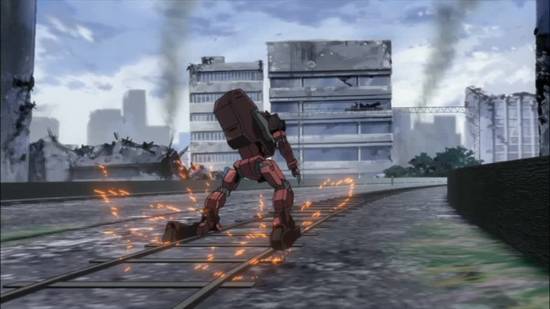
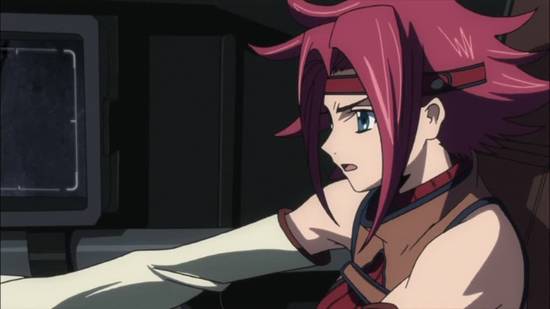
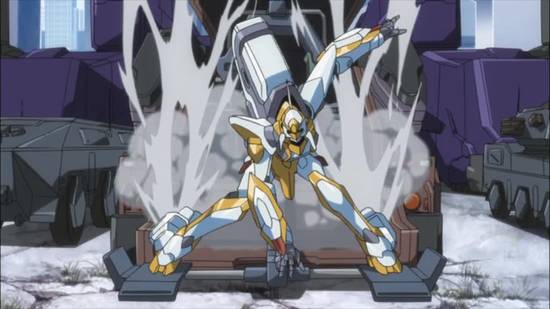
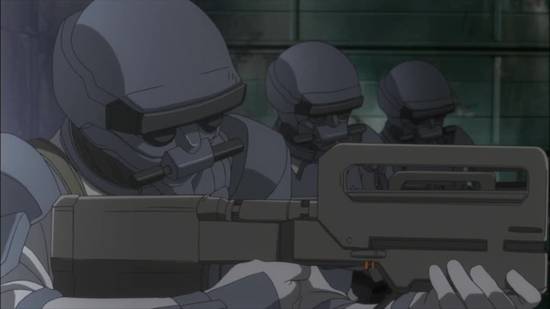
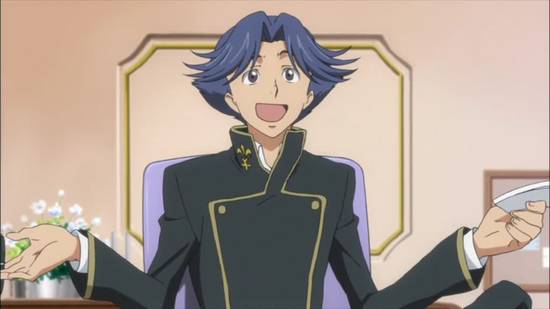
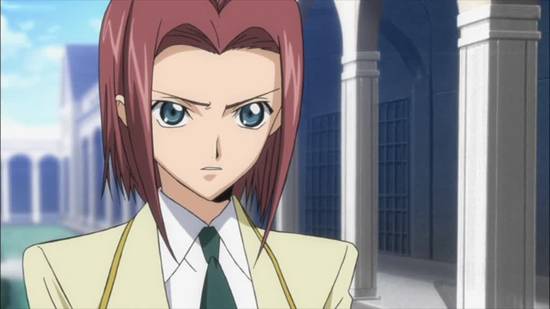

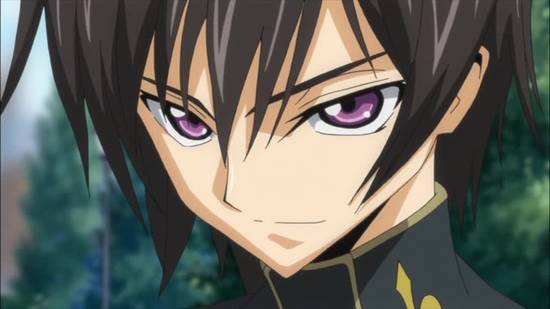

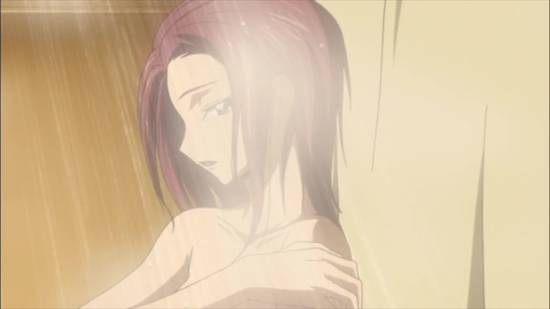
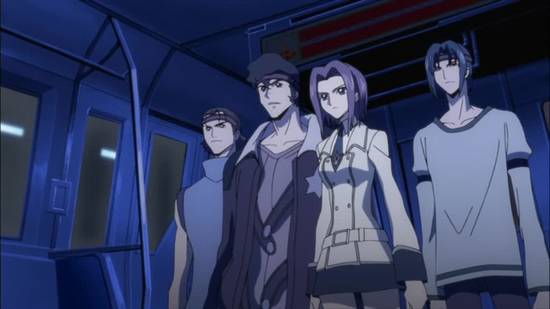

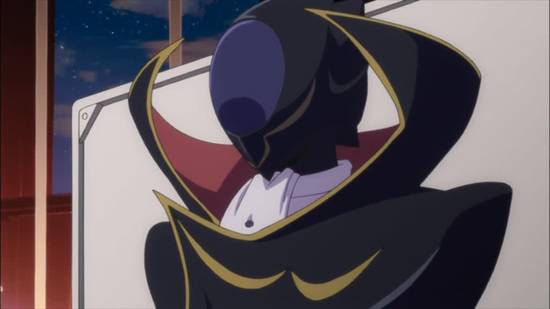
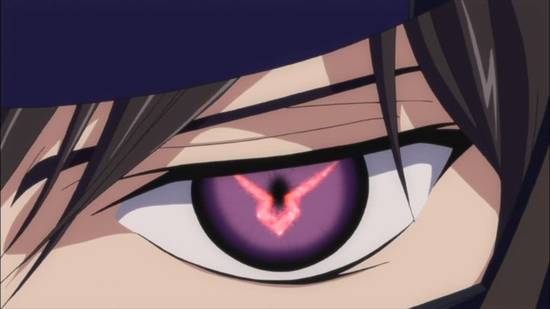
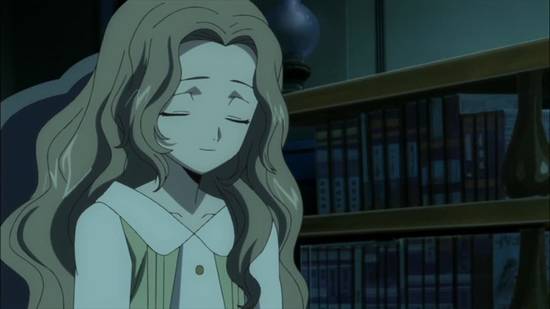

Your Opinions and Comments
Be the first to post a comment!